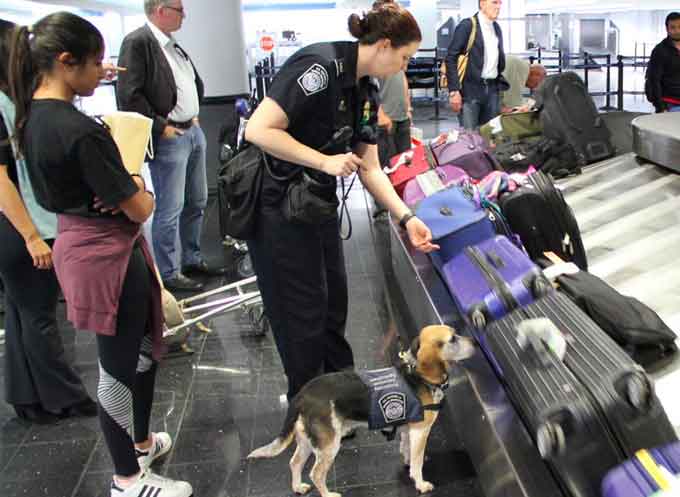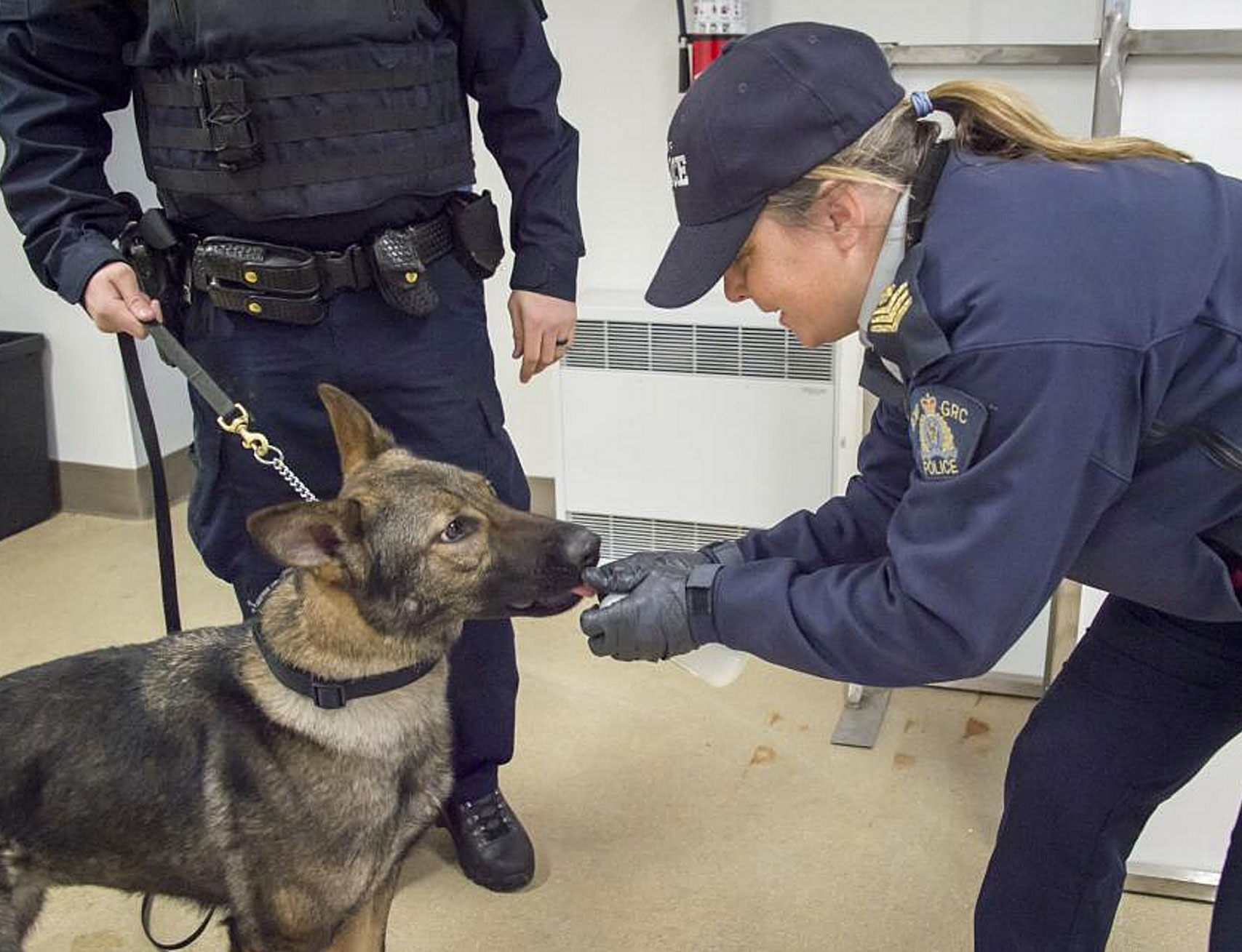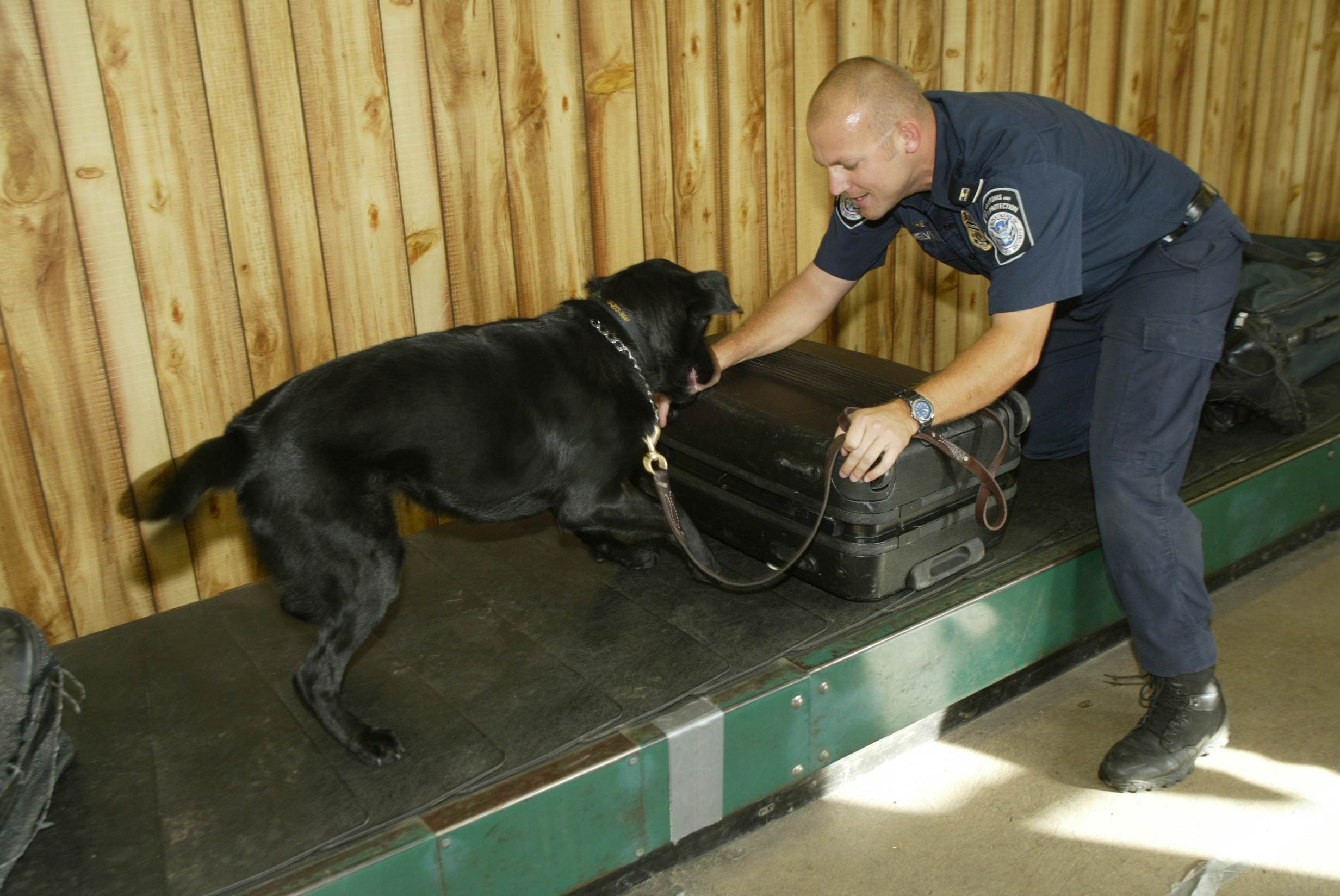
In 2017, more than 89 million people had one or more dogs living in their household. Most dogs know the commands sit, stay, come and hopefully go outside to use the bathroom.
While most dogs are food driven, and will sit intently watching as you eat a banana or bite into your steak, how many of those dogs can detect narcotics, firearms, currency, or agricultural products through a container on smell alone?
The dogs of CBP assigned to the Chicago Field Office (CFO) can, and are on the job every day proving it.
CFO currently has 32 canine teams, each consisting of a dog and its handler, working throughout the CFO’s area of responsibility carrying out CBP’s mission with meticulousness and care.
(U.S. Customs and Border Protection has a Canine Training facility in Front Royal, VA. Six new black and yellow Lab puppies are making their way through a rigorous training program, in hopes, they will one day become Canine Law Enforcement. Courtesy of U.S. Customs and Border Protection and YouTube. Posted on Sep 12, 2013)
The CBP canine’s primary mission is to detect and apprehend persons attempting entry to organize, incite, and carry out acts of terrorism; however, the canine program’s secondary goal is detection and seizure of controlled substances and other contraband, often used to finance terrorist and/or criminal drug trafficking organizations.
Each CBP canine belongs to one of two teams, enforcement or agricultural.
Enforcement canines are mostly Belgian Malinois, German Shepards, or Dutch Shepards.
These enforcement dogs attend training for seven weeks at either the Canine Center in Front Royal, Virginia or at the Canine Center in El Paso, Texas.
(Learn More. CBP Canine Enforcement Officer Bob Stone explains how he and his canine partner Ferro, work together at Dulles Airport to keep America safe. Courtesy of U.S. Customs and Border Protection and YouTube. Posted on Aug 29, 2017.)
At the training facility, the enforcement dogs learn the odor of common drugs and the newer drugs.
“Dogs were initially trained to detect cocaine, hashish, marijuana and heroin,” John Rader, Chief Field Canine Advisor CFO said.
“As time went on we added the odor of methamphetamine, then added the odor of ecstasy, and recently we added the odor of fentanyl to the training curriculum.”

Canines at Chicago’s O’Hare International Airport and New York’s John F. Kennedy International Airport were the first dogs in the nation trained to identify the odor of fentanyl.
“Chicago has more Express Consignment Operations (ECO) than anyone else,” Rader continued. “Fentanyl was coming in through these ECO and the post office.”
It took two or three weeks of training before the dogs were ready. Since then, all CBP enforcement dogs are able to identify fentanyl.
The other team of dogs CBP uses are agricultural dogs, and those are broken down into two teams: the agricultural dogs that walk the airport and cargo teams. The dogs that walk the airport are all rescued beagles; however, it is becoming harder to find beagles.
“Beagles are a popular breed and people are adopting them so we don’t have an opportunity to rescue them for CBP, which is causing the shortage,” Rader said.
(Learn More. CBP Agriculture Specialist Don Polliard explains what it takes for he and his four legged partner Hair E to keep America’s agriculture safe. Courtesy of U.S. Customs and Border Protection and YouTube. Posted on Aug 29, 2017)
There are certain traits CBP looks for in their beagles: they cannot be afraid, they must be independent, and have the food reward drive. CBP needs the dog to want their reward after doing what they were trained to do, and this training starts at the very beginning.
“Hypothetically, we lay five boxes on the floor,” Rader explained. “We leave the box open, and of those boxes, one box will have a piece of fruit. The dog for obvious reasons will stop at the box that has the fruit in it.”

“When the dog stops at the box, we immediately put them in a sit and reward them. This process continues until they do it on their own.”
The other agricultural dogs, cargo dogs, could be any breed, and most are Labradors and Golden Retrievers.
CFO only has four cargo teams, the smallest team of the three. These dogs search ECO and U.S. mail facilities.
“For the dog handlers they have to target an entire warehouse full of cargo,” Rader described, “it’s like trying to find a needle in a haystack. While an officer will screen 10-15 packages, a dog is searching 2,000 to 3,000 packages.”
All agricultural dogs attend a different facility than the enforcement dogs.
All agricultural dogs attend a 12-week school which is run by the U.S. Department of Agriculture at a training center in Noonan, Georgia, where teams of detector dogs and human officers train to prevent pests and diseases from entering the United States on smuggled agricultural products.
“When the program initially started, the USDA had their set of guidelines,” Rader said. “CBP was able to provide input and add to those guidelines, which allows us to accomplish our mission.”
(Learn More. Pavia Rosati goes to the airport to find out what happens to food smugglers and their confiscated delicacies. She meets with the people -and the beagle- who enforce the law. Courtesy of Live from Prince Street and YouTube. Posted on Jun 9, 2016)
Becoming a working canine for the CBP is not easy. CBP’s entire Office of Field Operations has 485 teams. “Quite a few years ago CBP held an open audition,” Rader remarked.

(Image Credit : James Tourtellotte, CBP)




















